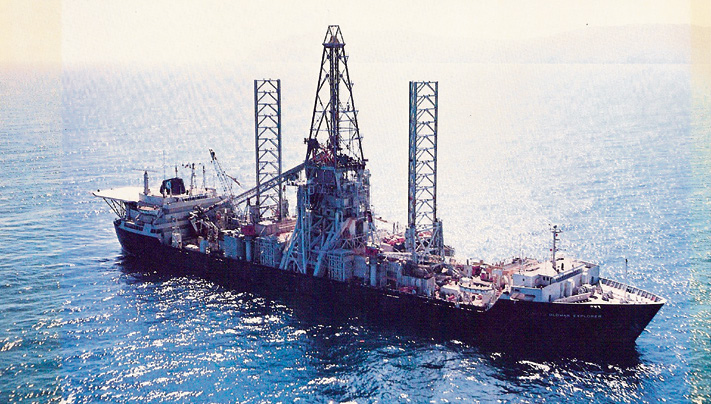Greening the Ungreenable: The Prospects for Deep-sea Mining
We need to switch to more sustainable forms of power generation, but this is being held back by the high prices and strategic supply vulnerabilities. Deep under the sea lies more rare earths than ever imagined, and there is both the technology and the funds to exploit it. 1 Moreover, the International Seabed Authority is preparing a framework to guard against environmental degradation. So, what can go wrong?
The temperature of the world is rising and the climate is changing. Having documented the nature of these changes and analysed their causes, at the end of March 2022, the Intergovernmental Panel on Climate Change (IPCC) offered us a way to stop overheating the planet. It would not be easy, but in 25 years’ time, the planet could reach a situation of net-zero greenhouse gas emissions if its businesses, governments, and citizens so wished. The task of rolling back the damage caused in the interval would then have to start. Central to this vision of the future was a massive increase in the role of wind and solar energy in global energy production. At present, these two sources contribute 7EJs 2 (1.36 percent) towards primary global energy production. Under the scenario offered by the IPCC, by 2045 this would increase to 260 EJs (53.6 percent). This implies a 37-fold increase in renewable generating capacity. 3 The report said nothing about the geographical location of these new sources of energy, nor about the distribution of the costs. It was also silent on the question of the materials required to realise this transformation. For example, if there is to be a 37-fold increase in wind and solar energy production, with current technology, it will require 37 times more materials than the entire stock produced to date for the solar panels, the generators, the storage batteries, etc. Undoubtedly, there will be an increase in the efficiency of wind and solar sources of energy, as well as some improvement in the recycling of materials, but the simple fact is that many of the minerals required are already in short supply, and this shortage is only likely to increase and to be exacerbated by strategic export controls.
A recent Dutch report, focussing on six critical metals, suggested that by 2040 the annual demand for several scarce metals needed in wind and solar energy would be several times higher than today, and the calculations excluded the requirements for electrical vehicles. 4 Most of these metals exist as major or minor constituents of minerals, such as silicates, carbonates, oxides, and phosphates. These are available on dry land, but dry land only covers less than 30% of the planet, and its resources have been exploited for decades. Attention is, therefore, turning to the oceans.

Fig. 2: The Hughes Glomar Explorer (Photo courtesy of the U.S. Government via WikiCommons).
Deep-sea mining is defined as any activity removing minerals from a depth of more than 200m. Minerals exist in three different forms: (1) cobalt-rich ferro-manganese crusts on sea mounts, (2) hydrothermal vents bearing various sulphides, and (3) potato-sized nodules polymetallic nodules containing nickel, copper, cobalt and manganese that have been spewed over the ocean floor for millennia. For the areas that lie outside a country’s exclusive economic zone (200 nautical miles/370 kms from the shore), the challenge of deep-sea mining is overseen by the International Seabed Authority (ISA), a body convened in 1994 by the UN Convention on the Law of the Sea (UNCLOS). There are several problems with this arrangement. The first is that not all countries are members – the USA, for example, has only observer status. The second is that outside the area identified as the responsibility of a national government, it is difficult to establish any effective governance or means of enforcement. Third, in order to obtain consensus, many of its rules and practices are non-binding. While preparing its own laws, regulations, and procedures on deep-sea mining, the ISA has granted 31 licences for exploration (but none, yet, for mining). Seventeen of those licences apply to the 4.5 million km2 Clarion-Clipperton Fracture Zone between Mexico and Hawaii. It is estimated that this area alone holds more reserves of recoverable metals than all of the Earth’s surface combined. Over a ten-year period, investors expect $15.3 billion in profits. 5 Four of those licences are held by DeepGreen, a Canadian firm with an Australian CEO – for exploration around the Pacific Islands of Tonga, Cook Islands, Nauru, and Kiribati. In June 2021, Nauru, an island of 12,000 inhabitants, invoked the so-called “two-year rule” 6 informing the ISA that its sponsored company (DeepGreen) intended to start mining, effectively giving the ISA two years to finalise its regulation for the sector. 7
The problem is that mining will disturb a unique ecosystem. At huge ocean depths there is no light, the biometric pressure is extremely high, and there are huge variations in temperature. Yet the hydrothermal vents provide the chemical-rich fluids that support an entire food chain. It was once thought that the deep-ocean surface was one relatively homogenous whole, but nothing is further from the truth. Each of these intense sites is unique and, through the spread of planktonic larvae, provides nutrients to a broader community. Destroying even one could mean the loss forever of a life form of which we know almost nothing. 8 The spread of waste and sediment could produce a ‘nuclear winter’ over an underwater habitat stretching hundreds of kilometres. The noise from mining activities can distort the navigational and communication abilities of creatures over a range of several kilometers. 9

Fig. 3: Manganese nodules (Photo courtesy of the United States Geological Survey, 2010).
The ISA’s new code will doubtless contain provision for environmental reporting and clearance before mining can commence. The problem is that it is difficult to be certain about environmental protection if one knows almost nothing about the environment that is being examined. Then there is the question of who will be in charge of monitoring and protecting. Do we really believe that Nauru has the capacity or resources to do this, or even, as the royalties flow in, the incentive? Early in 2021, the World Wildlife Fund started a movement for an international moratorium on deep-sea mining. In September 2021, the International Union for Conservation of Nature (IUCN) voted in its favour. 10 Individual businesses and banks have joined the call. We should not be looking at 24 months as a signal to start deep-sea mining, but as the opportunity to stop it. There is no greening of the ungreenable.
Richard T. Griffiths is Fellow at the IIAS and director of its New Silk Roads project. Email: r.t.griffiths@hum.leidenuniv.nl